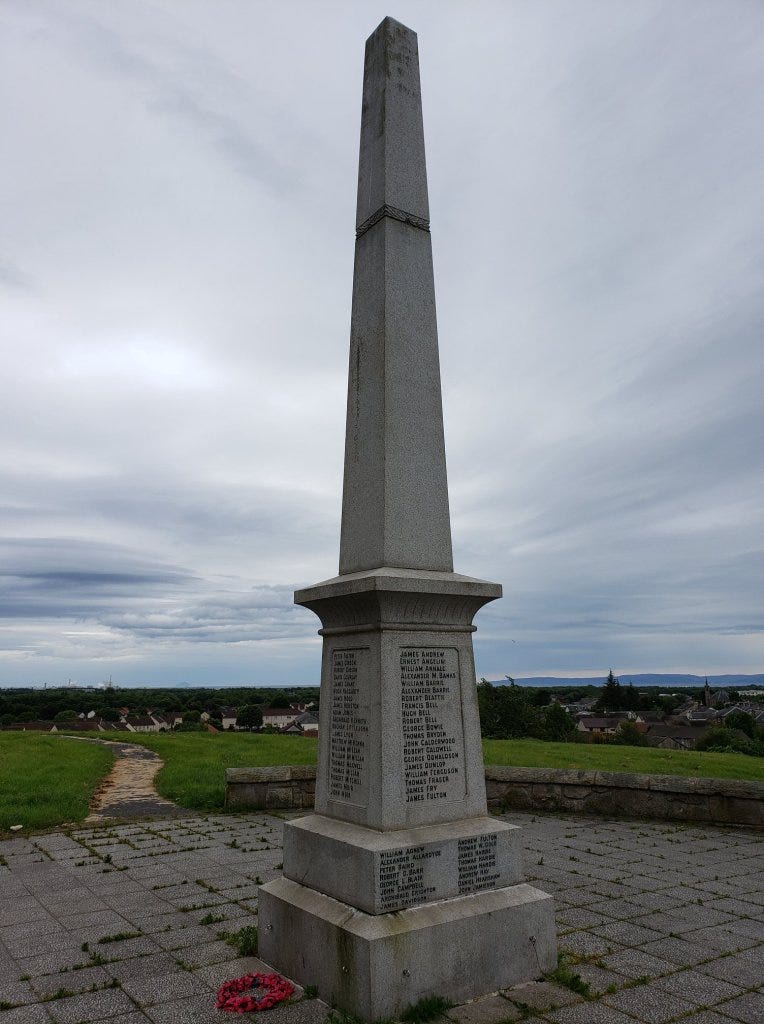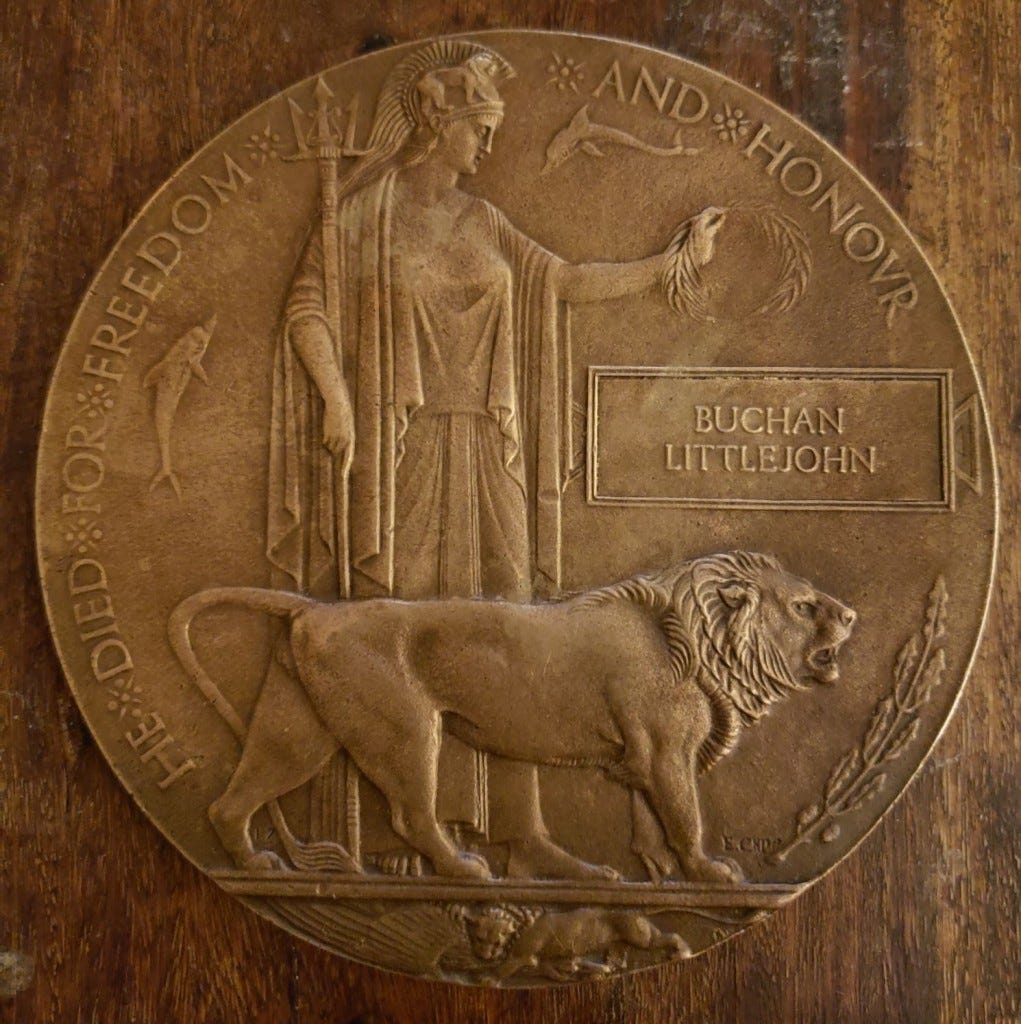a Veteran’s Day acknowledgment of honors and miracles

November 4, 1916
It’s 11/11, Veterans Day in the United States. Today is the celebration of Armistice Day, the end of WWI, and I’ve got a jaw-dropping story to tell about synchronicity, genealogy and an honored ancestor.
When my great-grandmother Helen was fourteen and living in Scotland, her mother died so Helen was pressed into service to raise her five younger siblings. Her wee brother, Buchan, was four at the time and Helen became his second mother.
When Buchan was 20, he enlisted with the Royal Scots Fusiliers immediately after WWI was declared. He was sent as a Private to France where he was wounded and sent home in July 1915. He spent eight months convalescing before being sent back to France in March 1916 as a Lance Corporal.
Buchan was killed at age 22 in an attack on Bayonet Trench, during the Battle of Le Transloy at the Somme, October 12, 1916 and eventually buried at the A.I.F. Burial Ground in France.
As both parents had died by that time, Helen was listed as his next of kin on his military records. The military dispersed Buchan’s belongings to her and their other siblings.
I knew all of this because I’d been researching my Scottish grandfather’s family. One day, I found a message in my Ancestry.com inbox from someone named Rita, asking if anyone in my family had ever lived in Tacoma, Washington. She and her husband Roger had found something on their property there, when building their house fifty years ago, and had always wondered how it got there. With the advancements in technology, she was finally able to track it down, and my Ancestry account had more information on Buchan than anyone else.
What Rita and Roger had found was a Next of Kin Memorial Plaque (also known as a Dead Man’s Penny) with Buchan’s name on it. The challenge now was to figure out how it got all the way to the west coast of the United States, with some good old fashioned genealogy research.
Turns out that Helen received the plaque, as next of kin, in 1919 when they were awarded by King George. She brought it with her from Scotland to Utah in 1922, where her family settled in the coal mining town of Castle Gate. Three of her older brothers (Bill, John and Geordie) lived there.
Helen died shortly after arriving in the States and her husband Will Garroch was killed six months later in the Castle Gate mine disaster, leaving their kids orphaned. Their children all eventually ended up in Michigan. None ever lived in Washington state.
I chased down all sorts of loose threads on Ancestry.com. Finally, a breakthrough happened when Ancestry popped up one of their famous “green leaf” hints. I discovered that Helen’s niece settled in Tacoma. This niece, I assume, took possession of the plaque after her father died (Helen’s older brother and “head of the family”).
This niece and her husband owned the property adjacent to Rita and Roger’s new land but it took genealogy research to connect her maiden name to anyone there. As the niece had no children, the ancestral lineage stopped there, so Rita kindly sent the plaque to me and it hangs in a place of honor in my home.
The first time I held the plaque in my hands, knowing that it belonged to my great-grandmother Helen—about whom I’ve written extensively in my new book Castle Gate—I swear I felt a ripple in time as I ran my fingers over Buchan’s engraved name. I’m quite sure Grandma Helen did the exact same thing, more than once.
Thank you, Rita and Roger, for helping to close the circle and bring Buchan’s memorial plaque back into the family, where he is absolutely remembered and honored.


